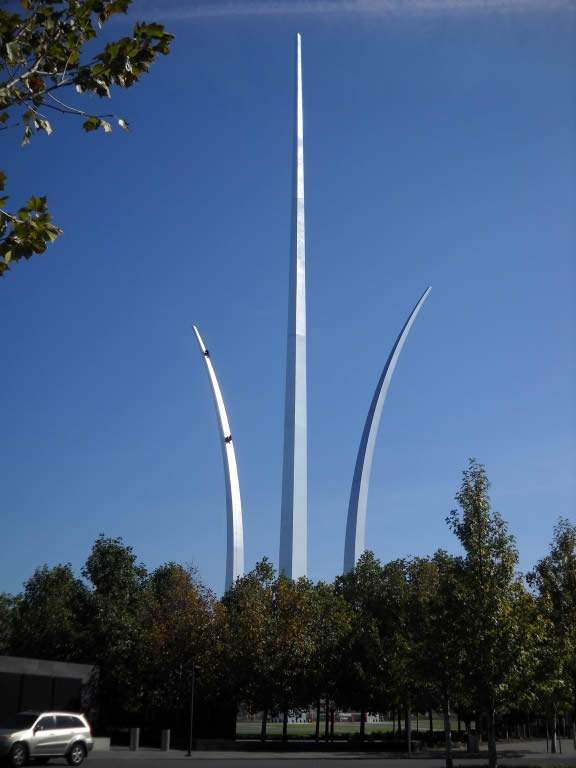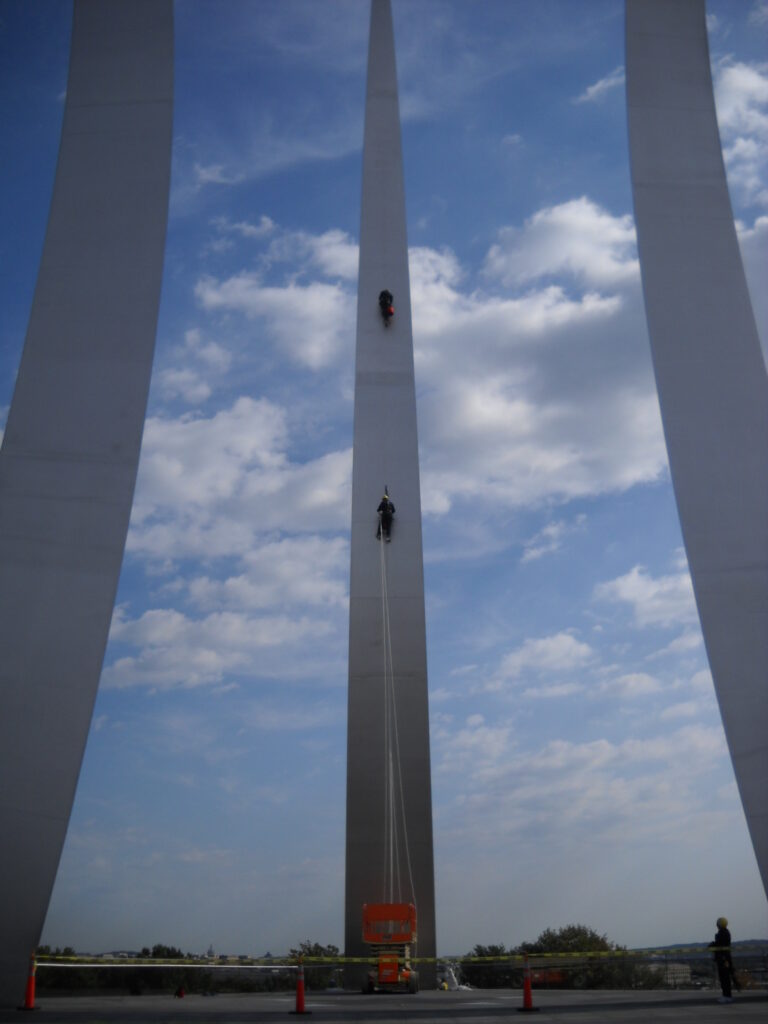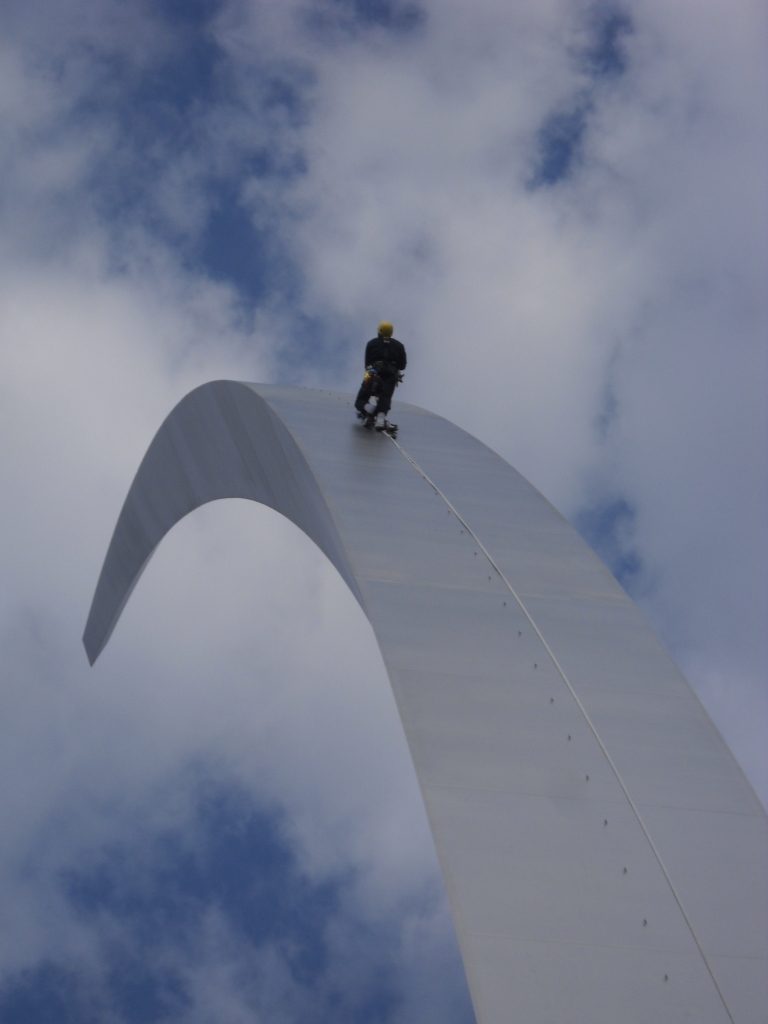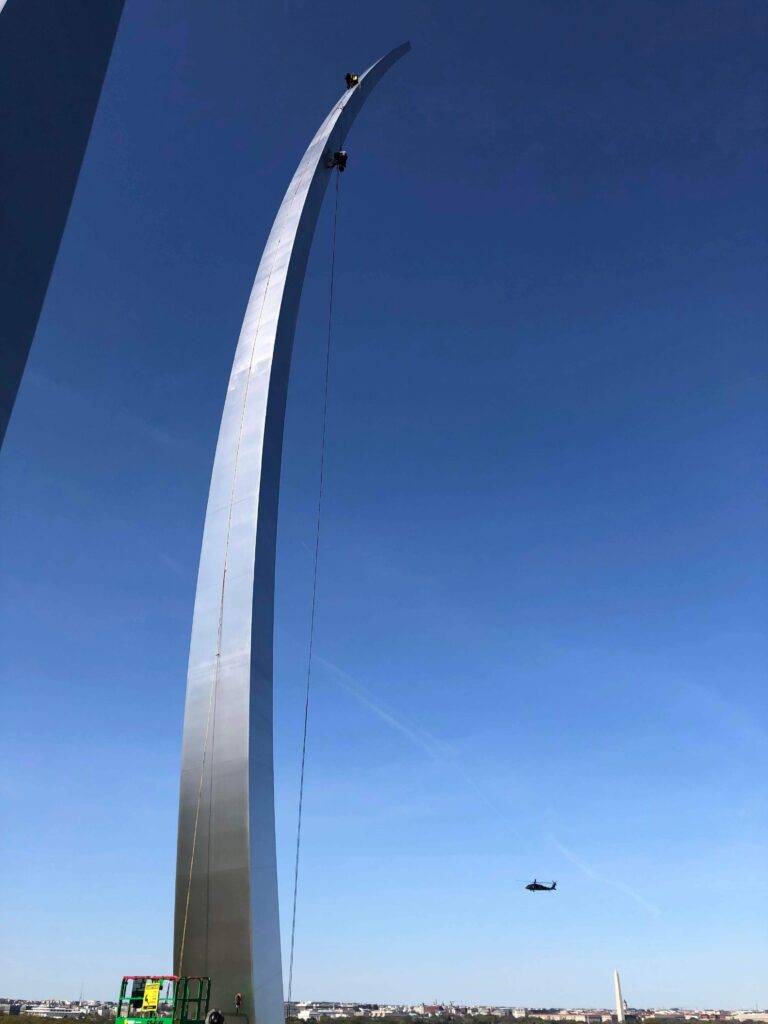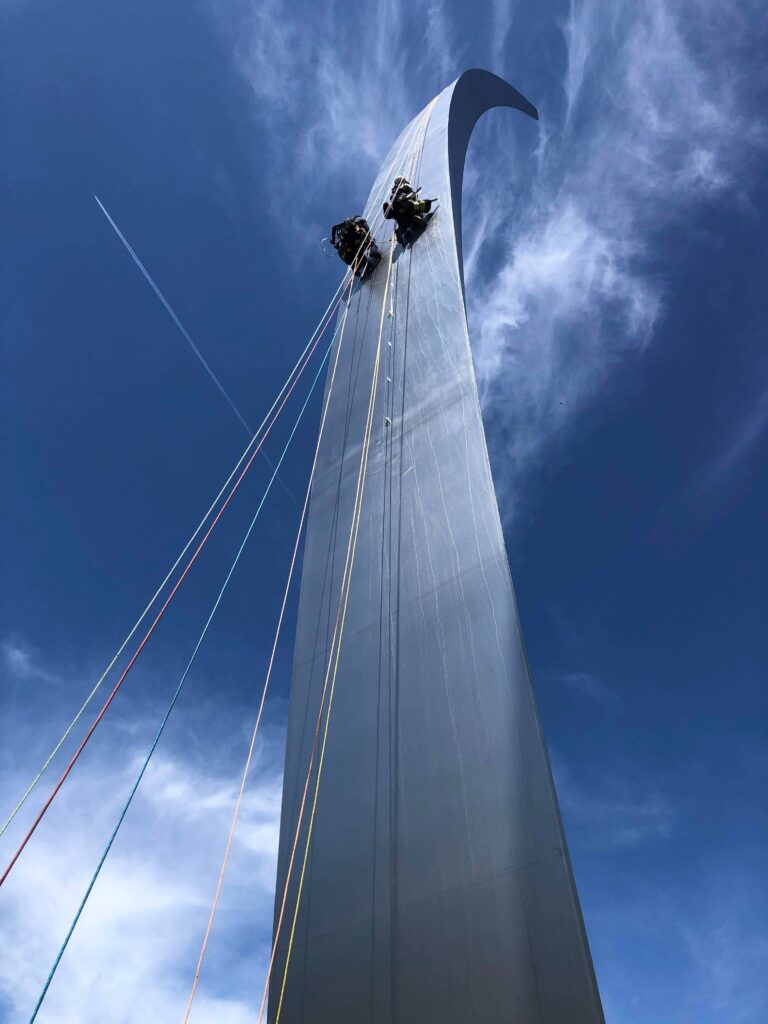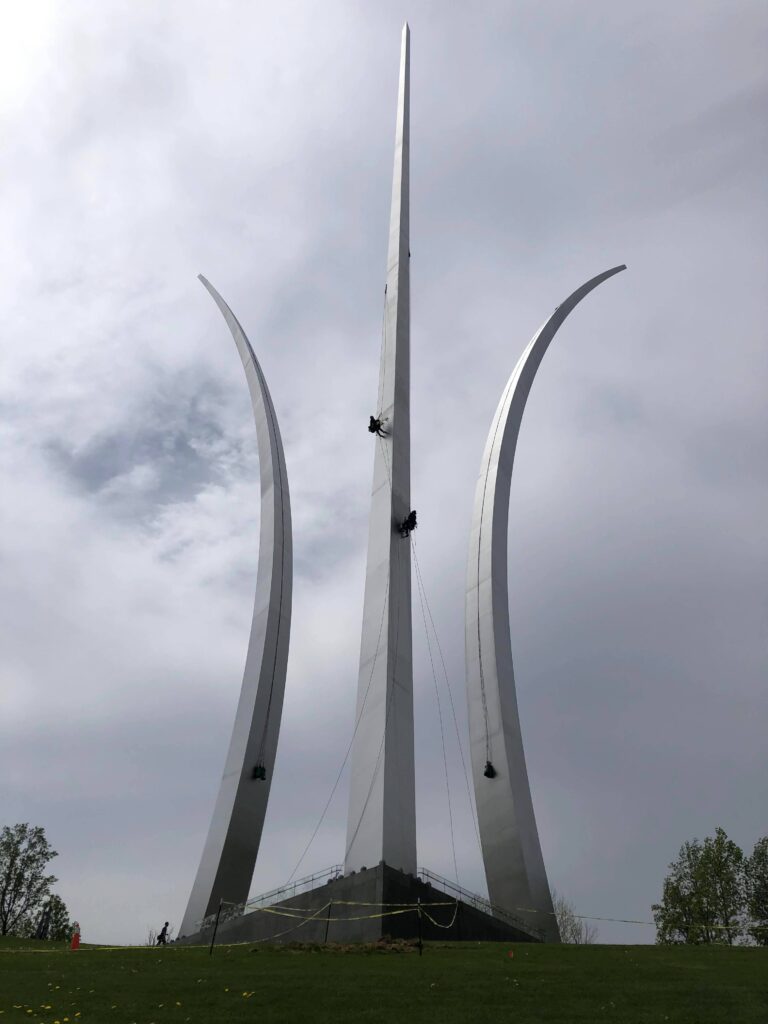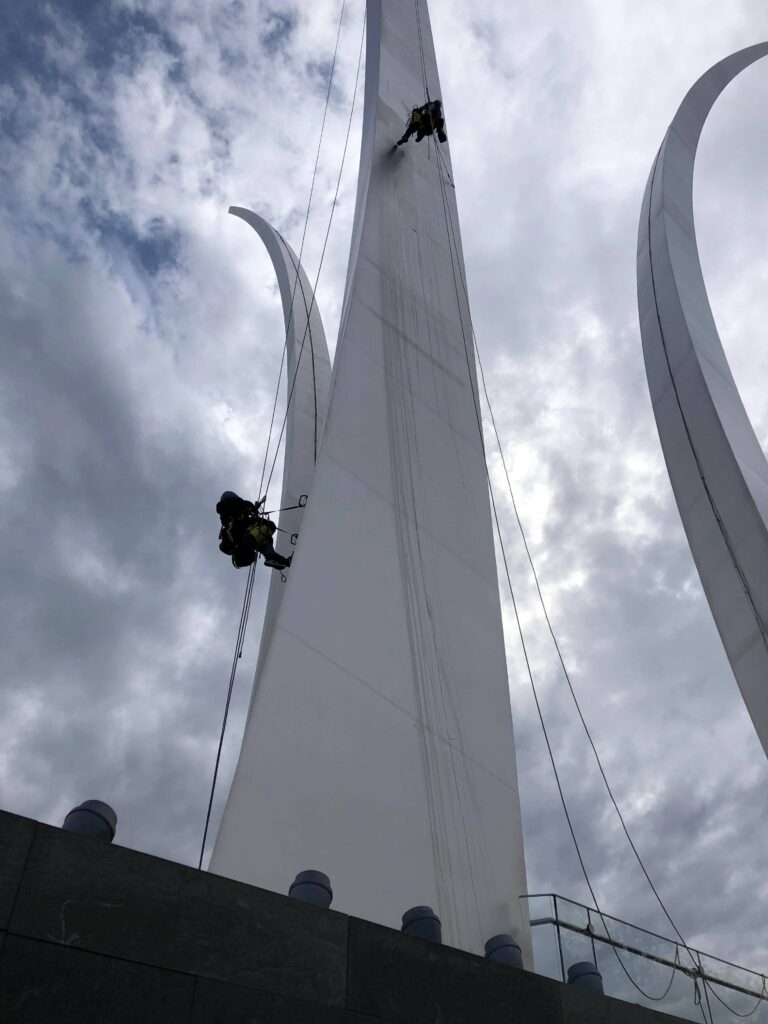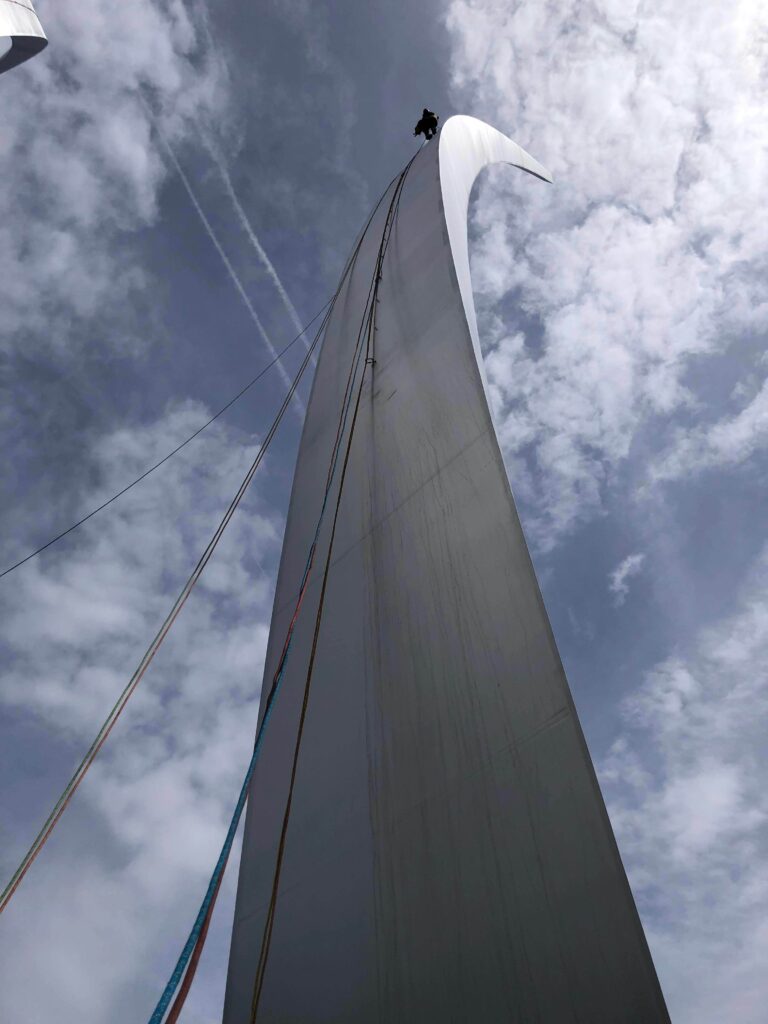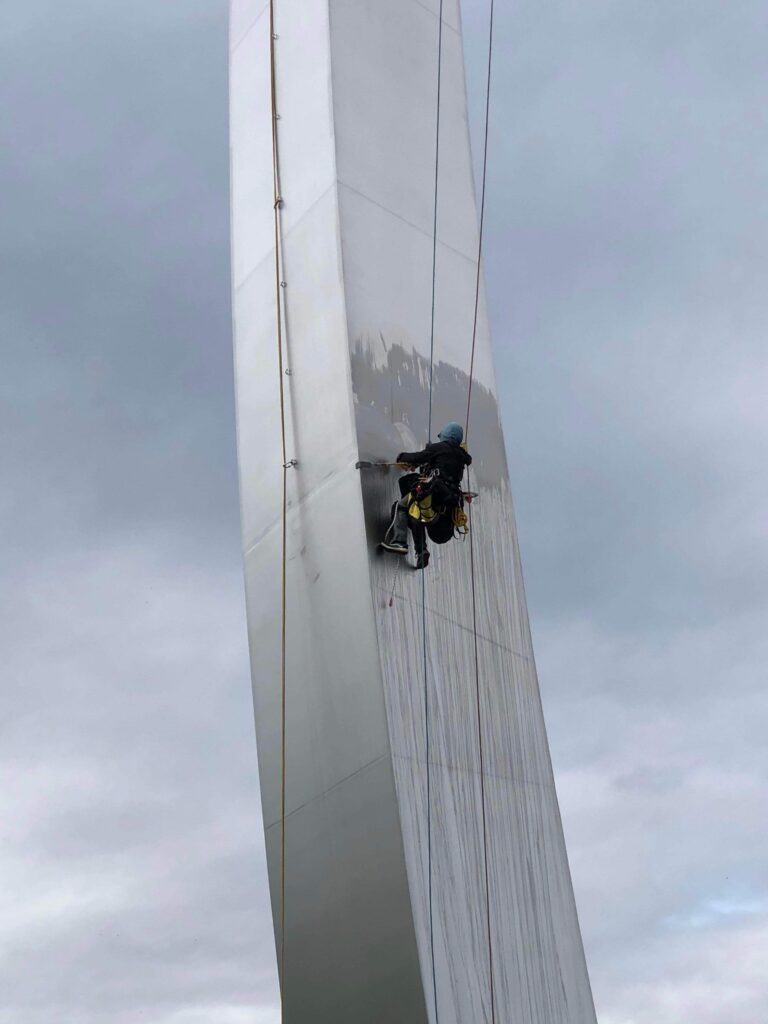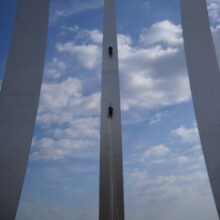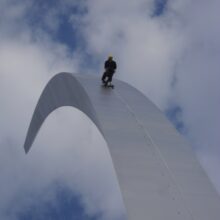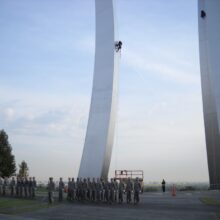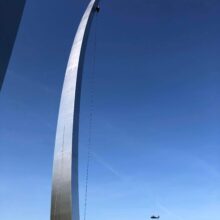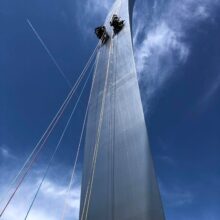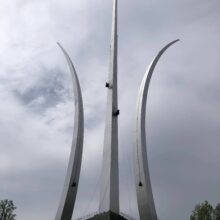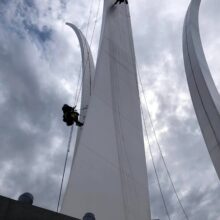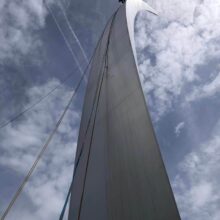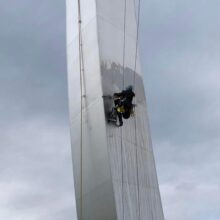U.S. Air Force Memorial
The US Air Force Memorial was dedicated in October 2006, as a testament to the service of the men and women of the Air Force. The principal components of the Memorial are its three curving stainless steel spires. The structures were designed by architect James Ingo Freed in collaboration with Arup Consulting Engineers.
The skin is ¾” stainless steel plate, through-welded to form a stiff skin. Welds are ground and polished to make the spires appear seamless. The internal structure of ach spire is composed of reinforced concrete, internal stiffening plates, and a system of ball-in-box counterweights housed within the spires. The integrity of the welds and the proper function of the counterweights are critical to the overall performance of the spires.
We were contracted to perform the five-year inspection beginning in 2011, returning 2016, and again in 2021. The 2021 contract was split into two parts; first the five-year inspection, and second the cleaning and maintenance of the Memorial. For the inspection the designers built looped rope anchor points into the rear face of the structures, provided threaded port holes for internal viewing, and left the Memorial Foundation with a detailed written guide as part of their as-builts. Working with the guide and with access provided by a rope access firm, we conducted the inspection in one week in Fall 2021. All surfaces and welds were visually inspected and if found to be suspect, measured with ultrasonic thickness gauges or tested with dye penetrant. The interior structure was viewed with a borescope through the threaded port holes for signs of corrosion, cracking, or malfunction of the counterweights.
In April 2022, the team returned to complete maintenance and cleaning of the Memorial. Maintenance was provided on the threaded porthole bolts; which included the removal and replacement of striped and/or broken bolts, cleaning of threads, and reattachment of the bolts to the inside of the spire. Each of the three spires were cleaned from top to bottom to reduce the risk of residues occurring on the surface and causing future corrosion. A detailed report was provided to be used as the basis for future inspections.
